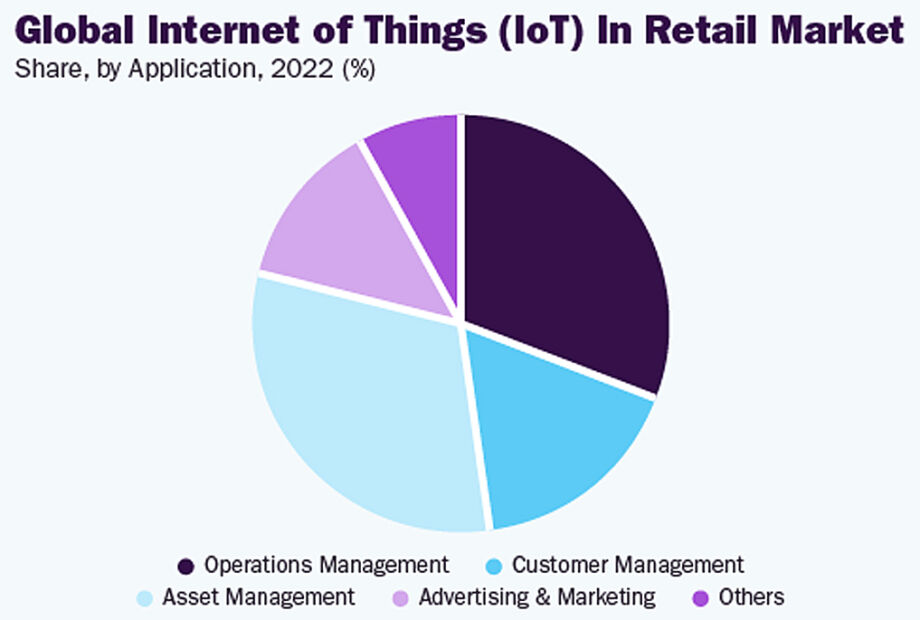IoT in retail to see 28.4% CAGR, says Grand View
- May 15, 2023
- Steve Rogerson

The global IoT in retail market is expected to reach $297.44bn by 2030, growing at a CAGR of 28.4% from 2023 to 2030, according to Grand View Research.
This growth is attributed to the adoption and implementation of connected technologies, such as Bluetooth Low Energy (BLE) and near-field communications (NFC) for an enhanced shopping and payment experience. Furthermore, with the reduced cost of IoT sensors and hardware, the demand for a seamless shopping experience is expected to fuel the adoption of IoT technology.
The growing acceptance of smart payments in the retail sector is also one of the major factors that will drive the industry’s growth over the forecast period.
The services component segment is expected to grow at a CAGR of 31.1% from 2023 to 2030 owing to the significant adoption of IoT, which has augmented the demand for infrastructure and application management services.
The NFC technology segment accounted for a revenue share of over 32% in 2022 owing to innovation in payment methods via mobile wallets.
The customer management application segment is expected to grow at the highest CAGR of 33.1% from 2023 to 2030 as it enables retailers to deliver a customised, personalised and engaging experience to their customers.
The on-premise deployment segment accounted for a revenue share of over 48% in 2022 owing to the advantages offered to retailers, such as control over data security and privacy, reliability, cost savings, and customisation options.
Asia Pacific is expected to grow at the fastest CAGR of 32.7% during the forecast period as a result of rising investments in the retail sectors of developing countries in the region.
IoT devices also help in the back-end operations for retailers, such as organising effective logistics operations. GPS trackers, RFID tags and IoT-connected sensors help track the movement of goods in real time, providing seamless supply chain management. This also prevents damage, spoilage or loss of goods during transportation, which is significantly valuable for perishable food items.
This, in turn, is expected to drive the IoT in retail market growth. For instance, in November 2022, Microsoft launched a supply chain platform, which is expected to help organisations make the most of their supply chain data domain investment. This would be aided by the Microsoft ecosystem, which includes Microsoft Cloud, Azure and Dynamic 365.
The pandemic had a significant impact on worldwide spending, including the retail industry. Retailers put several new projects on hold as their primary focus was the continuation of business operations during the economic crisis. Moreover, the technology roadmap for IoT has been delayed by companies due to remote working limitations.
However, IoT adoption in retail is expected to increase in the coming years. Retailers are implementing mobile payment systems, autonomous cleaning robots and contactless checkout kiosks to reduce human interference and curb the spread of the coronavirus. Technologies such as AI, cloud services and automation are further augmenting the growth of the retail industry post-pandemic.




